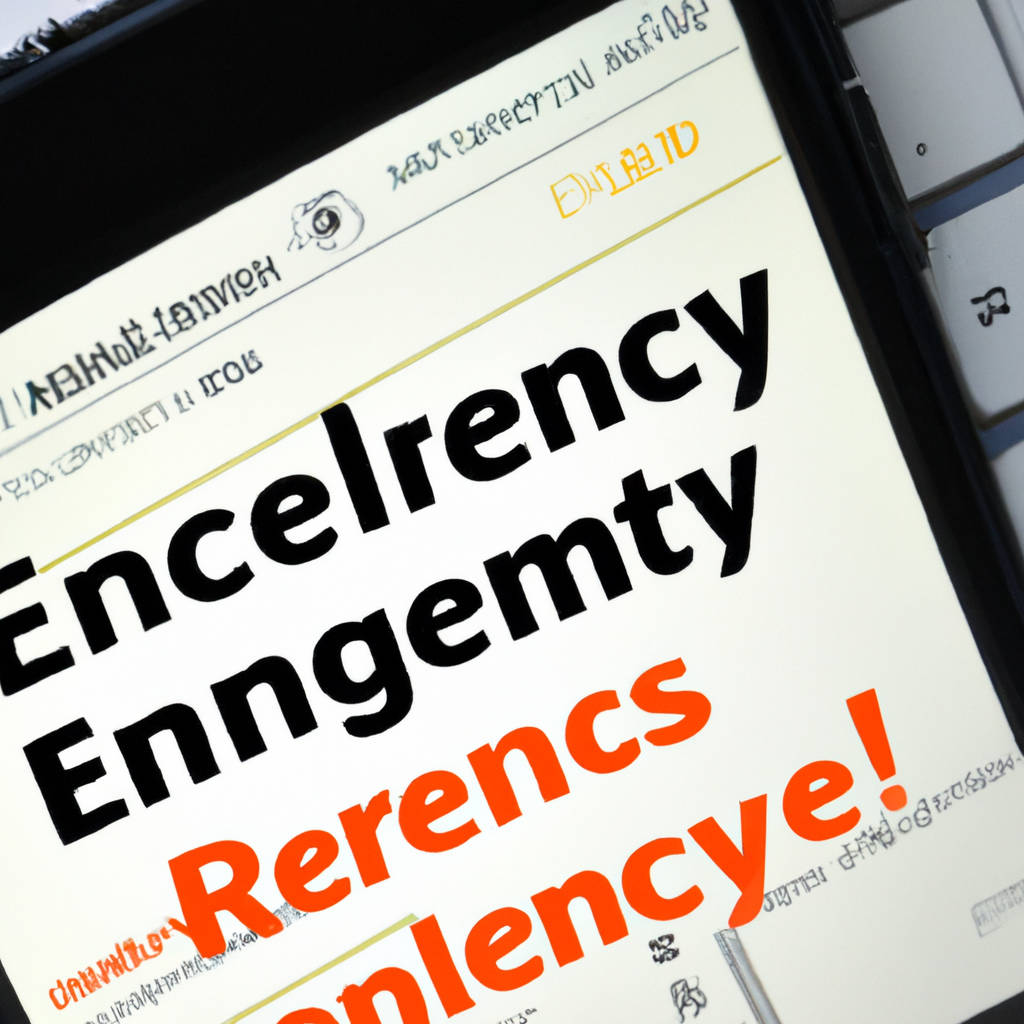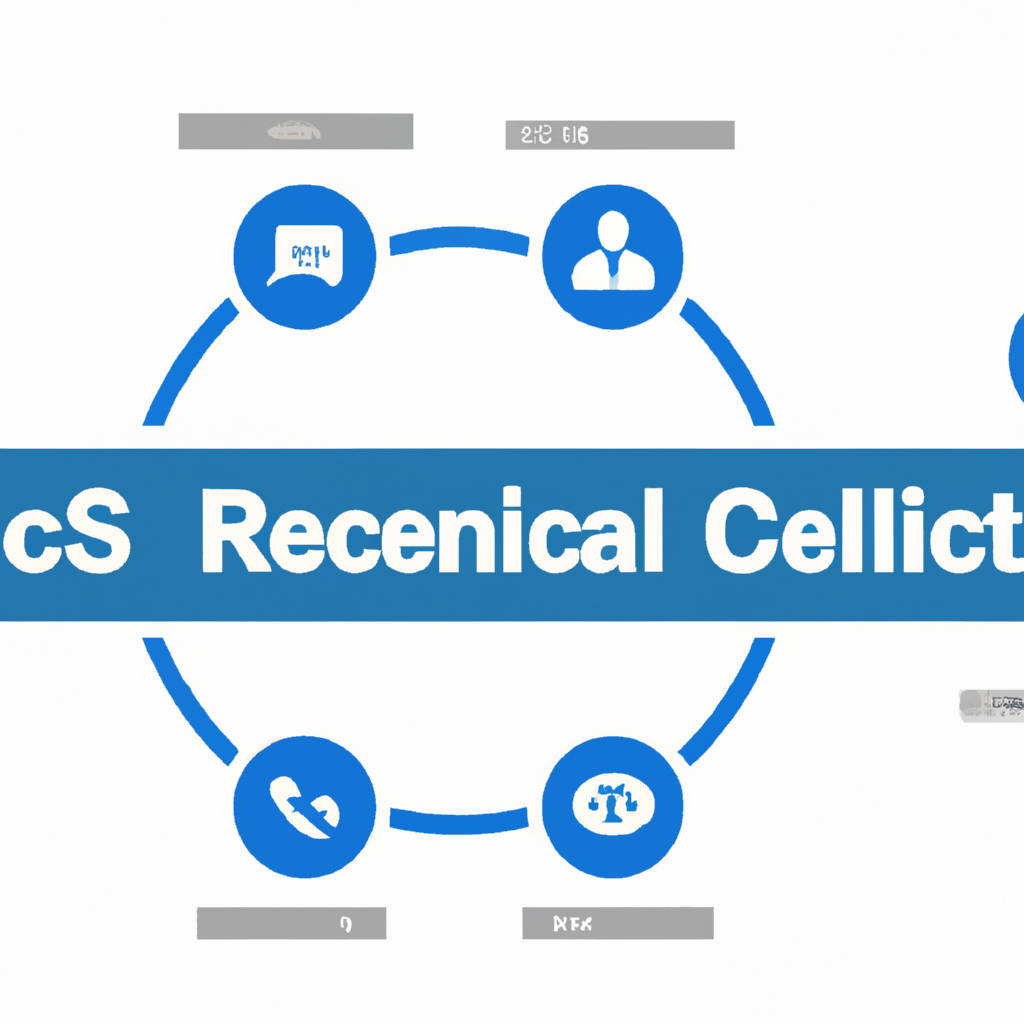Enhanced emergency communication via Rich Communication Services (RCS) is an innovative approach to improving the way we respond to crises. RCS, a communication protocol between mobile-telephone carriers and between phones and carriers, serves as a replacement for SMS and MMS messaging with a more versatile feature set. In the context of emergency communication, RCS has the potential to revolutionize the way we disseminate information and coordinate responses during crises.
Unlike traditional SMS or MMS, RCS allows for the sharing of high-resolution images and videos, the creation of group chats, and real-time typing indicators, among other features. These capabilities can significantly improve emergency communication by enabling clearer, more detailed information exchange. For example, during a natural disaster, the ability to share high-resolution images of affected areas can provide a more accurate understanding of the extent of the damage, helping emergency responders to better plan their response.
Moreover, the group chat feature can enhance coordination among different emergency response teams. By creating a dedicated platform for real-time communication, RCS can streamline the decision-making process, enabling faster, more efficient responses. Notably, the typing indicator can also aid in ensuring that critical messages are received and responded to promptly.
RCS can also support interactive communication, such as read receipts and the ability to send responses directly from notifications. These features can enhance the effectiveness of emergency alerts, ensuring that important information is not only delivered but also acknowledged by recipients. Moreover, the ability to respond directly from notifications could facilitate faster reporting of emergencies, potentially saving precious time during critical situations.
Additionally, RCS supports the integration of chatbots, which could be used to automate certain aspects of emergency communication. For instance, chatbots could handle routine queries or provide instructions for basic emergency procedures, freeing up human operators to focus on more complex tasks.
However, while RCS promises numerous advantages for emergency communication, it also presents certain challenges. For one, the adoption of RCS is not yet widespread, limiting its effectiveness in reaching a broad audience. Furthermore, the advanced features of RCS may require more data than traditional SMS or MMS, which could be a concern in situations where network connectivity is limited.
In conclusion, RCS has the potential to significantly enhance emergency communication, offering a more versatile, interactive platform for information exchange and coordination. However, for its full potential to be realized, issues such as limited adoption and data requirements need to be addressed. With the right strategies and investments, RCS could play a crucial role in improving our response to emergencies, ultimately contributing to a safer, more resilient society.

Key Points
Key points play an essential role in the effective communication and understanding of a topic or argument. They are the crucial details that provide a comprehensive summary or a brief overview of the subject at hand. When presenting information or arguing a point, it’s necessary to highlight these key points to help your audience understand the main ideas or takeaways.
For example, in a business presentation, the speaker may outline the key points of a new strategy to help the team understand the main objectives. Similarly, in an academic paper, the author may summarize the key points of their argument to help the reader follow their thought process. To effectively convey these key points, clarity and brevity are vital. They should be precise and concise, avoiding unnecessary jargon or complex language. Furthermore, they should be logically organized to ensure seamless flow and coherence.
Whether you’re writing an essay, delivering a speech, or discussing a business plan, always remember to highlight the key points. This not only aids understanding, but also makes your communication more impactful and persuasive. Overall, key points are the pillars upon which any form of communication or argument is built, serving as the compass that guides your audience through your thoughts and ideas.
RCS: A Modern 911 Communication Channel
Rich Communication Services (RCS) is an advanced protocol for communication that is revolutionizing the way emergency services like 911 are communicated with, providing a contemporary and more efficient channel for emergency communications. With the integration of RCS, the traditional voice-only 911 call is being transformed into an interactive experience, enabling users to share images, videos, and accurate location data in real time during emergencies. This advanced technology can dramatically enhance the effectiveness of emergency responses by providing more precise information about the emergency situation and location.
RCS allows for real-time communication, offering not only text but also the transmission of high-resolution images and live video, which can be invaluable in emergency situations. It presents a significant upgrade over previous communication methods, ensuring that critical information can be shared swiftly and accurately. The technology also supports group chats, allowing multiple people or departments to be included in the conversation, thereby improving coordination and response times.
Furthermore, the use of RCS for 911 communications can also assist in situations where making a voice call isn’t possible or safe. For instance, in cases where an individual is unable to speak due to a medical condition or a threat to their safety, they can silently send a message to 911 with the relevant details regarding their emergency. This feature could potentially save lives in certain scenarios.
In addition, the use of RCS can also improve the accuracy of location tracking. With traditional 911 calls, locating the caller can sometimes prove challenging, especially in rural areas or high-rise buildings. RCS, on the other hand, can provide precise Global Positioning System (GPS) coordinates, making it easier for emergency services to locate the individual in distress.
Overall, RCS is paving the way for a more reliable, efficient, and comprehensive 911 communication system. Its adoption signifies a major leap forward in emergency communication technology, enhancing the ability to respond effectively to crisis situations and potentially saving countless lives.

Improving Emergency Texting Accessibility
Enhancing accessibility to emergency texting services is a vital initiative that is recognized globally. Society has become increasingly dependent on digital communication, making it imperative to ensure that everyone, including individuals with disabilities, can access and use emergency texting services efficiently. The primary challenge lies in the development of universally accessible platforms that can accommodate varying needs. For instance, people with visual or hearing impairments require unique adaptations such as text-to-speech and speech-to-text features. Additionally, the elderly and those with cognitive impairments may need simplified interfaces or step-by-step instructions to effectively utilize these services.
To address these needs, technology companies, public safety organizations, and advocacy groups are collaborating to create innovative solutions that are user-friendly and inclusive. For example, some services have integrated real-time text (RTT) technology, allowing for communication without the need for typing skills or literacy. Others utilize geolocation features to pinpoint the user’s exact location, a crucial element during emergencies.
Furthermore, educating the public on how to use these services is a critical aspect of improving accessibility. Many individuals may not be aware that these services exist, or they might not understand how to use them effectively. Therefore, comprehensive public awareness campaigns outlining how to use emergency texting services, as well as the benefits and limitations of these services, are essential.
In conclusion, improving emergency texting accessibility is a multifaceted issue that requires innovative technical solutions, user-focused design, and public education. By focusing on these areas, we can ensure that everyone, regardless of their abilities or circumstances, has the capacity to seek help during emergencies, fostering a more inclusive and safer society.
Increased Reliability and Efficiency
In the rapidly evolving landscape of technology and business operations, increased reliability and efficiency have emerged as key factors in driving growth and success. This is evident in various industries and sectors, from manufacturing to information technology, healthcare, and beyond. The drive for greater reliability is centered on the need for systems, processes, and equipment that can consistently deliver expected results without failure or breakdown. This encompasses not just the physical machinery but also the software applications, networks, and people that make up an organization’s infrastructure. On the other hand, efficiency speaks to the ability to achieve these results with minimal waste, effort, or expense.
In the era of digital transformation, companies are leveraging advanced technologies such as artificial intelligence, robotics, and data analytics to enhance both reliability and efficiency. For instance, predictive maintenance powered by AI can identify potential equipment failures before they occur, thereby improving reliability. Similarly, robotic process automation can streamline and expedite routine tasks, thereby boosting efficiency.
Furthermore, the integration of these technologies is creating synergies that further enhance reliability and efficiency. For instance, data analytics can provide insights into the performance of AI and robotics, enabling continuous improvement and optimization. At the same time, AI and robotics can generate valuable data that feeds into analytics, creating a virtuous cycle of enhancement.
However, this drive for increased reliability and efficiency is not without challenges. It requires significant investment in technology and skills, as well as a culture of innovation and continuous improvement. There are also issues of data privacy and security to consider, as well as the potential impacts on jobs and the workforce. Nevertheless, the potential benefits in terms of improved performance, competitiveness, and customer satisfaction make this a worthwhile pursuit. As such, increased reliability and efficiency are likely to remain central to the strategic agendas of businesses and organizations for the foreseeable future.

Seamless Integration with Existing Systems
Seamless integration with existing systems is a significant consideration in the implementation of new technologies. This process involves the smooth merging of new and existing software or hardware, creating a cohesive and efficient working environment. The primary objective is to enhance functionality without disrupting the current system’s operations. This approach reduces downtime and unnecessary interruptions, increasing productivity and efficiency.
Seamless integration is particularly crucial when dealing with complex IT ecosystems where different systems interact and exchange data. When a new system is seamlessly integrated, it ensures better data flow, improved communication, and easier management of the entire IT infrastructure. For example, integrating a new Customer Relationship Management (CRM) system with existing sales and marketing software would allow for a more streamlined workflow, leading to better customer service and increased sales.
Moreover, seamless integration also reduces the risk of data discrepancies or losses that often occur during manual data transfers. It provides a single point of control, making it easier for IT professionals to manage various systems and maintain the security and integrity of the data.
However, achieving seamless integration can be challenging. It requires careful planning, a clear understanding of both the existing and new systems, and a skilled technical team to execute the integration process. Additionally, it may require customizing the new system to ensure it aligns with the existing system’s architecture and workflow processes.
Regardless of the challenges, the benefits of seamless integration are undeniable. It can significantly improve the overall efficiency and effectiveness of an organization’s IT infrastructure. As more businesses continue to innovate and evolve in today’s digital world, seamless integration with existing systems will remain a crucial aspect of their technology strategy.
Expanded Accessibility and Reach
In the digital age, expanded accessibility and reach have revolutionized the way individuals connect, communicate, and transact. This phenomenon has primarily been facilitated by advancements in technology, specifically the internet and digital platforms. The internet has redefined boundaries, allowing individuals and businesses to connect with a global audience, irrespective of geographical location. This has significantly enhanced the reach of businesses, enabling them to cater to a global clientele, thereby creating new avenues for growth and revenue.
Simultaneously, through digital and assistive technologies, expanded accessibility has been instrumental in promoting inclusivity, particularly for persons with disabilities or those residing in remote locations. Digital platforms equipped with features like text-to-speech, voice recognition, and tactile feedback have enabled these individuals to overcome physical limitations and participate actively in the digital world.
In the educational sector, expanded accessibility and reach have democratized learning. Through the concept of online learning, educational resources and courses from top universities worldwide have been made accessible to anyone with an internet connection. This has empowered individuals, especially from underprivileged backgrounds, to gain knowledge and skills necessary for their personal and professional growth.
Furthermore, in healthcare, expanded accessibility and reach have revolutionized patient care. Telemedicine, for instance, has enabled patients, especially in rural or remote areas, to access specialist care without the need for travel. This has significantly improved the quality of healthcare available to these individuals.
However, while the expanded accessibility and reach have brought numerous benefits, they have also led to challenges. Issues such as data privacy, digital divide, and cyber threats have surfaced, requiring concerted efforts for their resolution. Nevertheless, the potential benefits of expanded accessibility and reach, in terms of promoting inclusivity, enhancing business growth, democratizing education, and improving healthcare, far outweigh these challenges and underline its importance in the digital age.
